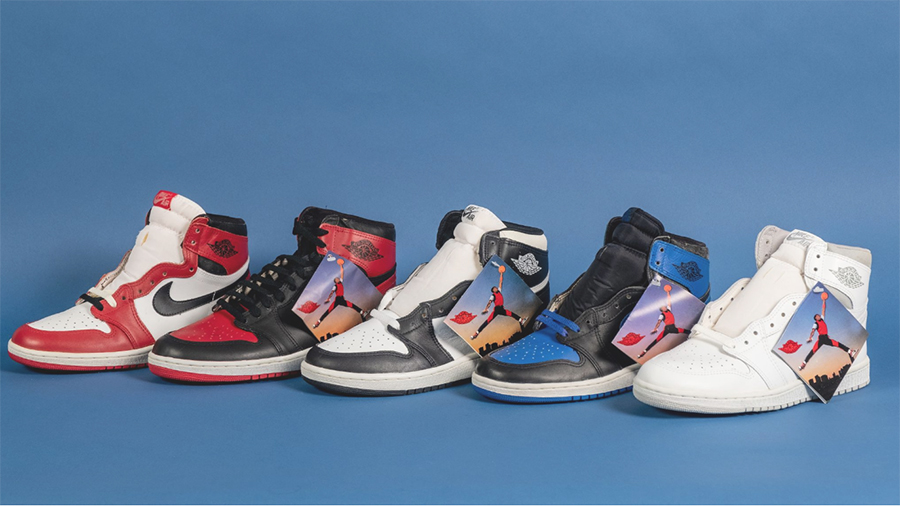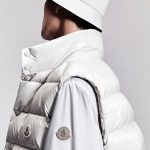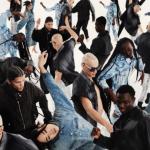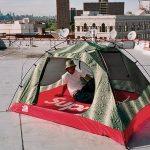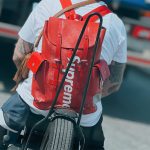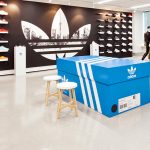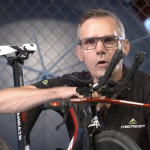The age old adage is playing out before our eyes—you can’t fix a problem until you admit you have one.
Nike has a problem of its own making—and it knows it.
Nike, Inc. president and CEO John Donahoe admitted as much when speaking with analysts on a conference call Thursday afternoon. While he said results from the fiscal third quarter, which ended February 29, aligned with the company’s expectations, the executive team also knows Nike is not performing to its potential.
“While our Consumer Direct Acceleration Strategy has driven growth and direct connections with consumers, it’s been clear that we need to make some important adjustments. Simply put, we need to make adjustments in four areas,” Donahoe said on the call.
“We need to sharpen our focus on sport, we must drive a continuous flow of new product innovation, our brand marketing must become bolder and more distinctive, and while Nike Direct will continue to play a critical role, we must lean in with our wholesale partners to elevate our brand and grow the total marketplace,” Donahoe detailed, saying what the market has noted for some time.
“Starting last June, we aligned our organization to put the consumer and a sharp focus on sport back at the center of everything we do,” the CEO said, outlining the path to fixing the problem at Nike. “We integrated our leadership structure, appointing Heidi O’Neill and Craig Williams as co-presidents.”
Donohue said the company reinvested in consumer-led sport-focused teams, which are the foundation of the brand’s offense, creating a “relentless flow of innovative products combined with distinct brand storytelling delivered through differentiated marketplace experiences.”
“We’re well on our way to building a multi-year cycle of innovation that’s bringing freshness and newness to consumers,” Donahoe noted. “We pulled forward several innovations more than a year, and our intent is to delight consumers and disrupt the industry.”
Much of the marketing muscle Nike displayed in the past with key athletes and key sports moments is expected to be on display at the Paris Olympics.
Donahoe also mentioned Nike signing a deal to equip the German national team in football/soccer (read SGB Media coverage below) and replacing Adidas after a 70-year run, but that program doesn’t start until 2027.
The big moment for the marketplace may have come when the CEO said that Nike is increasing its investment in wholesale to elevate and grow the market.
“We recognize that our wholesale partners help us scale our innovation and newness in physical stores and connect our brands in the path of the consumer,” he said.
In other words, Nike should not have turned its back on its retail partners and upset the delicate balance of the marketplace ecosystem. Instead, they opened the door for other brands like Hoka, On and New Balance to move into leadership positions in the innovation pipeline. Nike missed big on the partnership approach with larger retailers that let other fashion-forward innovators take the shelf space Nike walked away from over the last few years.
“Nike used to have 30,000 wholesale arrangements (retailers who sold their product). They cut this number sharply, down to 3,000 and told people they were going to 1,800. Small shoe retailers lost their core brand,” wrote Amalthea Fund in a note to investors, perhaps suggesting that many of those small retailers closed due to the loss of the brand.
Nike’s streamlining of wholesale accounts was part of its 2017 “Consumer Direct Offense” strategy, which envisioned the company growing its sales through its own physical and digital direct-to-consumer channels and in partnership with 40 “strategic” retail partners while exiting “undifferentiated” wholesale outlets. At the time, Nike estimated that 40 percent of its distribution was in what it termed “differentiated” spaces, and Nike planned to increase that percentage to 80 percent over the next five years.
Nike started to return to DSW in October 2023 after its 2021 pull out. The family footwear retailer noted on their Q4 conference call that their kids business was a key positive performer in the fourth quarter, thanks to renewed Nike inventory. DSW said in mid-2023 that it expected the return of the brand to complement DSW’s bigger push into athletics and casual offerings, marked by the recent acquisitions of Keds, Le Tigre and Topo Athletic. At one point, during the height of the pandemic, Nike represented as much as 7 percent of DSW sales as dress and casual sales declined, according to DSW executives at the time.
Macy’s also announced last year that Nike apparel would return to its product mix, also starting in October, after Nike’s apparel was pulled from the chain in 2021. Nike footwear has continued to be available at Macy’s through Finish Line in-store shops. Macy’s chairman and CEO at the time, Jeff Gennette said Nike’s apparel is “one of the most important brands for our customer. We had lots of customers that were disappointed that we didn’t carry it over the past year.”
Foot Locker earlier last year said it had “renewed” its relationship with Nike, with allocations expected to return to traditional levels. In early 2021, Foot Locker reported that Nike was reducing its mix as low as 55 percent by the fourth quarter of 2022 from 65 percent in the fourth quarter of 2021 and 75 percent in the fourth quarter of 2020 as part of Foot Locker’s wholesale marketplace reset. Also at the time, Foot Locker said it would receive reduced allocations of Marquee products from Nike.
Mary Dillon, Foot Locker’s CEO and president, said during an Investor Day in March 2023 about the repaired partnership, “I have spent a great deal of time with Nike revitalizing our partnership, developing a shared vision of the future marketplace and aligning on growth plans in key strategic areas like basketball kids and sneaker culture. We’ve reestablished joint planning as well as data and insight sharing so that we can better serve customers, and the fruits of our renewed commitment to one another will begin to show up in holiday this year as we build increasing momentum to 2024 in the 50th anniversary of Foot Locker.”
Nike also indicated last year that it had ended its efforts to reset the wholesale marketplace. Exited U.S chains over the past several years also included Belk, Big 5 Sporting Goods, Bob’s Stores, Boscov’s, City Blue, Dillards, Dunham’s Sports, Eblens, Fred Meyer, Olympia Sports, Shoe Show, Urban Outfitters, VIM, and Zappos. Olympia Sports has since shuttered its doors.
To be fair, Nike’s return to selling to some exited wholesale accounts was not about waking up one day and proclaiming “we made a mistake.” The decision at the time clearly came as the company, like many retailers, saw inventories swell in fall 2022 as late spring 2022 and early fall 2022 orders arrived simultaneously after inventory coming out of China backed up at the docks. Nike had been aggressively marking down products to rebalance inventories since that time, although it no longer had access to many of its traditional mid-tier wholesale partners to clear product.
Before the inventory build-up, Nike faced inventory constraints due to pandemic-related supply chain issues.
“We’ve been starving the wholesale channel for six to eight quarters because of supply constraints,” said Matthew Friend, Nike’s CFO, on its quarterly analyst call in December 2022. “We were prioritizing adequate inventory levels within Nike Direct and, so we’re seeing strong demand as we go back into our wholesale partners with available supply.”
Donahoe turned the conversation back to innovation, suggesting it was the most important issue to address. A renewed pipeline requires fresh product and fresh product starts with innovation. But the question remains: Where will this innovation come from?
“Most importantly, we’re back on our front foot with growing confidence in our innovation pipeline,” Donahoe continued. “We know it will take some time to scale these innovations, but we see some early green shoots. And we’re also carefully managing our most important franchises for the long-term health. And, as a result, our product portfolio will go through a period of transition over the coming quarters.”
Does Nike have the team to pull it off, given all the employee cuts and employees who left last year?
Active lifestyle industry analyst and advisor Matt Powell believes losing key talent may be the root of Nike’s innovation problem.
“The loss of hundreds of years of institutional knowledge has had a devastating effect on Nike,” Powell wrote in a note to SGB Media. “Many new people are in jobs that they are not prepared for and are reporting to people who are in jobs that they, too, are not prepared for. Nike’s issues are fixable, but not in the short term. We are seeing a massive change in the sneaker world happening right before our eyes.”
But Donahoe believes Nike has the issue figured out—with Air.
He said Nike has many platforms that drive growth, but said they want to “go deep on our greatest innovation platform” and a true source of competitive advantage: Air.
“Today, as a platform, Air is a double-digit billion-dollar business on its own, larger than some Fortune 500 companies,” he said. “There’s nothing like Air.” Spoken like a CEO without 40 years of Nike (or any prior athletic footwear) experience, back when Nike Air was the company’s first iconic sneaker and Nike was the #2 brand behind Reebok.
Donahoe called Air a proprietary technology that lets Nike iterate and revolutionize. He said it drives breakthrough performance benefits for athletes and defines the future of sportswear. “Air offers stability, resilience and energy return, unlike any other cushioning platform.”
There may be a few Nike employees left inside the berm that remember when Nike couldn’t sell Air effectively until they made it visible, not because consumers saw it as a breakthrough technology, but because it became a fashion element.
Can the brand continue to grow with a 40-year-old fashion element (er, technology) as its core driver?
“‘Innovation’ is an overused and misunderstood concept,” Powell added in a LinkedIn post days before the Nike conference call. “Brands that played it safe during the pandemic and leaned hard on core products now look stale and dated (Nike, UA, Adidas). Brands that stayed fresh flourished (LULU, Hoka, On, NB). It is not about new technologies, which are incremental at best, but rather about fashion. Consumers still demand new and fresh products. Those that deliver here will win.”
Donahoe continued, “Decade after decade, we’ve developed new breakthroughs in Air, and as we approach the Olympics in Paris this summer, we continue to innovate with Air with a focus on helping the world’s greatest athletes compete and win on sports largest stage. And so this summer, you’re going to see Air drive major advancements in measurable performance benefits on the track, on the court and on the pitch. In addition to Alphafly 3, which continues to set the standard for distance racing, you’ll see Air new footwear that brings elite performance to everyday runners.”
Donahoe said “We’ll see Air in football and basketball footwear in new and more visible ways, and we’ll see Air in the fastest track spikes Nike ever created.”
“Beyond creating leading-edge performance innovation, we also continue to bring new sensations of Air across our business, including our lifestyle portfolio,” Donahoe shared. “For instance, Dynamic Air, our newest innovation platform, is a true breakthrough, delivering a uniquely comfortable sensation with each step. It’s a total rethinking of what airbags can be. Historically, airbags have been fixed and static; picture inflatable raft; they compress when you step and then immediately return to their original shape, ready for the next step.
“It’s a total rethinking of what airbags can be.” Huh? Yes, Nike’s CEO said that to a group of Wall Street analysts, but he wasn’t around when Reebok and other brands went down that road 30 years ago.
It’s not as catchy as “Just Do It,” but hey, let’s give it a try. Remember, “This Isn’t Your Father’s Oldsmobile” was a marketing pitch too.
“Dynamic Air changes the game,” Donahoe continued. “It unchambers the Air to create a new underfoot sensation that’s truly responsive. As the consumer takes a step, our new four-tubed air unit allows air to flow freely between the tubes, responding to the pressure of each unique stride to deliver maximum comfort. We will scale Dynamic Air across many of our leading Air franchises, but it starts with the Air Max Dn, a shoe that offers just the latest example of how we’re using Air to craft a new lifestyle franchise. I’ve been wearing the Dn all week.”
But then came the pièce de résistance that should engage dozens of urban males between the ages of 12 and 25 years old for years to come:
“And in fact, I’m wearing it right now. It really is a unique and great sensation,” Donahoe offered. “And what’s more, Dn’s bold style and design identity is deeply rooted in youth culture and the next generation.”
Now we’re heading into Skechers territory with Dan Marino and Howie Long if John Donahoe is the spokesmodel. Nothing says we need a new technology or innovation like the CEO wearing your sneakers to work.
Turning back to the fiscal third quarter (see details bellow), company CFO Matt Friend said the company’s third quarter showcased the operating discipline of its teams as it delivered revenues up slightly on top of the prior year’s double-digit growth, outperforming expectations in North America and more than offsetting dynamic conditions in some other geographies like EMEA, which posted a decline.
“We executed well to recapture transitory cost headwinds and expand gross margins even in a promotional environment,” Friend shared. “Our inventory position remains healthy with total marketplace units down double digits versus the prior year and weeks of supply at their lowest levels since the pandemic.”
Friend said the company highlighted that particularly in an uneven macro environment, newness and innovation are what drives brand distinction.
“Consumers are moving quickly to access new products,” he noted. “Trends are igniting in different places and rapidly spreading around the world. Nike needs to be faster. And so we are accelerating a multi-year innovation cycle. And while our new product cycle is just getting underway, this quarter showed that we are on the right track. Since the start of this fiscal year, new and updated footwear models have grown into a majority of our Top 20 growing footwear franchises in Q3. Added up, footwear products introduced over the past several quarters are on track to generate a multibillion dollar run rate on an annual basis, and we see even more opportunity ahead.”
Friend said, “On the whole, we see momentum where we are focused most.”
Performance footwear reportedly grew in high single digits in the quarter, with double-digit growth from $100-plus franchises, including Kobe and Ja in basketball, Metcon And Motiva in fitness and Structure and Vomero in running. Women’s fitness footwear reportedly grew double digits and key apparel franchises such as $100-plus leggings, continued scaling with strong sell-through.
“New product journeys from Book 1 to Vomero 5 and V2K, to Lunar Roam and Travis Scott Jordan Jumpman Jack drove consumer energy and ahead of a new wave of Nike Air innovation, the Air Zoom Alphafly 3 debuted with a marathon world record and sellout launches across multiple markets around the world,” Friend shared.
“Now to maximize the impact of our new product cycle, we are accelerating several important actions lined up against key brand and sports moments,” Friend said. He shared some key initiatives:
The first point he made was Nike’s plan to elevate and differentiate the consumer experience with Nike brands at retail, “especially as consumers continue to shift back into physical stores.” This includes increased investment to support strong seasonal retail marketing execution, breadth and depth of assortment and elevated service and product presentation.
“You heard John say that we will initially launch the Air Max Dn next week at more than 4,000 doors. We will increasingly leverage our full portfolio of thousands of physical doors to position our newest products in the path of consumers.” he said.
Second, Friend said they are sharpening brand storytelling to tell fewer, bigger stories with greater reach.
“We will focus our demand creation investments to elevate our brand and most distinctive products, leading with the voice of the athlete, amplifying our new innovation, and engaging consumers at the point of sale,” he said.
“As we look forward, we see that our Olympics Air for Athletes campaign will be the boldest expression of Nike’s brand voice in many years,” he exclaimed.
Third, he said the brand is in the midst of shifting its product portfolio towards newness and innovation.
“Last quarter, we spoke of our intentional actions to reduce marketplace supply of certain key franchises to ensure they remain healthy and strong, while feeding and scaling new products. Given the way consumers are responding to our newest product journeys, even amidst a more promotional environment, we have decided to accelerate our actions,” he noted.
“For example, we are pulling back supply of Classics, such as the Air Force 1, and we’re reducing supply of Pegasus ahead of launching new innovation in the Peg 41,” he shared. “We’ve been here before. Twelve months ago, our basketball portfolio was meaningfully impacted when we exited a key signature franchise. Since then, we’ve more than offset that impact by scaling innovation with the GT series, introducing newness to consumers in Ja, Sabrina, Kobe and Book and returned to strong double-digit growth this quarter in basketball.”
Looking ahead, Friend said the company expects lifecycle management of key product franchises to create some near-term headwinds, particularly on digital. Still, he said they are confident that they are taking the right actions to fuel brand momentum and return to stronger long-term growth.
“Last, while we continue to bring operational discipline as we manage our business through these shifts and a multi-year period of higher cost inflation, we are also positioning Nike for the future,” he assured the participants in the call. “This includes restructuring our organization to sharpen our focus and increase our investment on the consumer and sport, which we believe will fuel our next phase of long-term growth.”
He went of to say the company began streamlining support and operating functions, reducing management layers and shifting more of resources towards consumer-facing activities.
“In particular, we are increasing investment in areas such as design, product creation, merchandising, brand and our ground game to drive greater impact for consumers, dimensions of sport and the marketplace,” the CFO shared. “Overall, our focus is on allocating our resources to drive more return while building an operating model with greater speed and better cost productivity as we grow.”
The options are all practical starting point solutions for sure, but the solution Donahoe and Friend both mentioned on the call should be a winner involves working closer with and supporting retailers. They are a great source for consumer preference input – if you only look at your own DTC data all day you only know what you sell – and a number of them could use a strong partner right now as the recessionary headwinds build. Even brands like On saw slowing growth last quarter despite their DTC focus and Hoka continues to focus laser-like on the consumer through DTC as well. New Balance has focused on the consumer through their retailer base and is getting more support back because of those actions.
But then again, NB isn’t a public company so they don’t have to pound their chest about DTC every quarter to prove to Wall Street analysts they can grow margins while attracting new customers.
Image courtesy Nike, Inc.
***
Nike Becomes Kit Supplier for German Football Association in 2027
Nike Inc. Gets Wholesale Lift in Fiscal Q3 to Post Earnings Beat

